Politics
In Maps: How The Demography Of Madhya Pradesh Affects Its Politics
Venu Gopal Narayanan
Nov 16, 2023, 03:08 PM | Updated Nov 21, 2023, 01:05 PM IST
Save & read from anywhere!
Bookmark stories for easy access on any device or the Swarajya app.
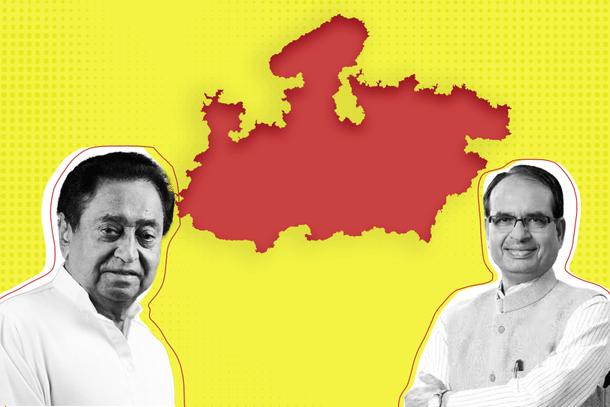
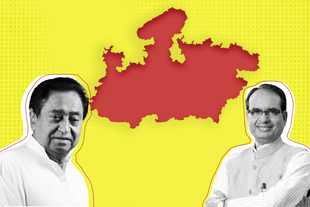
Madhya Pradesh, the heart of India, is a remarkably diverse state.
Travel from district to district, past the splendours of Sanchi, the jyotirlinga at Omkareshwar, through the tribal belt, bustling Bhopal, or the grand palaces of Gwalior, and you are struck by myriad variations — cultural, geographical, racial, historical, social, political, and, as all true foodies will concur, culinary.
Consequently, it is inevitable that this mélange manifests itself in electoral verdicts, as well.
Here we shall undertake a cartographic tour of the state to understand the heterogeneity at play, as Madhya Pradesh prepares to vote in a new legislature on 17 November.
A brief political backgrounder first: From 2003, the Bharatiya Janata Party (BJP) has won three assembly elections back-to-back in style. But in 2018, the Congress won by a whisker, although it failed to cross the halfway mark on its own. The vote difference between the two parties was an infinitesimal 0.1 per cent.

Gallingly for the BJP, it lost 16 seats by less than 2 per cent of the vote. And, to add insult to injury, it still ended up polling slightly more than the Congress.
Unsurprisingly, the Congress government of Kamal Nath lasted little more than a year, and it fell in March 2020 when Jyotiraditya Scindia defected to the BJP along with 22 members of the legislative assembly (MLAs).
The bulk of these Congress rebels were concentrated in the north of the state, in the Gwalior region, and represented constituencies where the BJP lost by a margin of over 10 per cent.
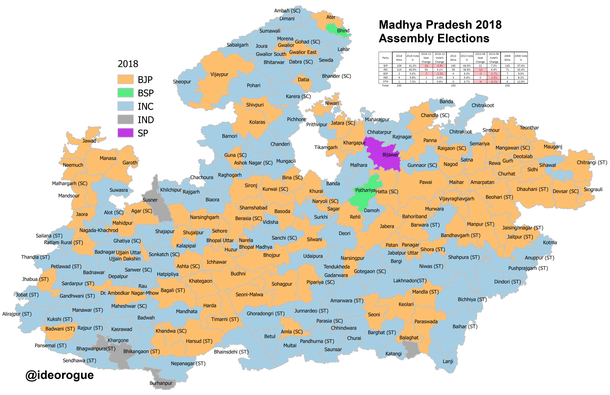
All said and done, the Congress succeeded in 2018 because it capitalised on the state’s underlying diversity, by playing its traditional, repulsive brand of identity politics.
This is best understood if we study the demographics of Madhya Pradesh.
As the map below shows, Muslims are largely concentrated in the west of the state, in a belt running across the Malwa plateau from Ratlam to Bhopal. And this is where the Congress won a number of seats.
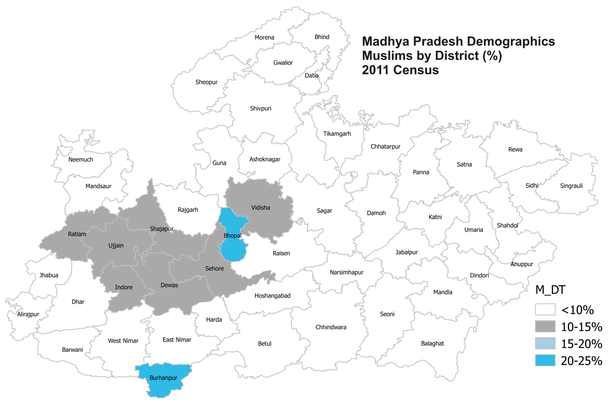
Madhya Pradesh has a sizeable tribal population that has been prone to identity politics and persistent conversion efforts. And, again, we see that the Congress won a number of seats in this belt.
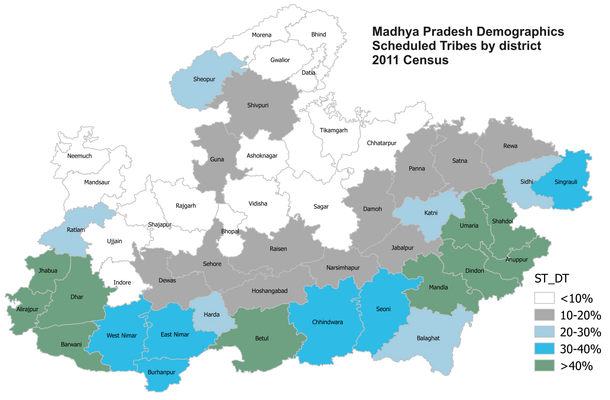
The scheduled castes are more concentrated in the northern half of the state, around Gwalior, Bundelkhand, and the western Malwa plateau (see blues in the map below).
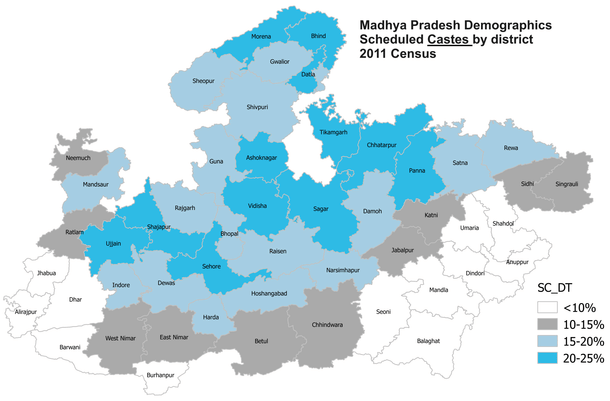
Combining these communities into a composite demographics map, we see that the bulk of the state is significantly prone to the Congress’ stock electoral ploys of minority appeasement and vote-bank politics.
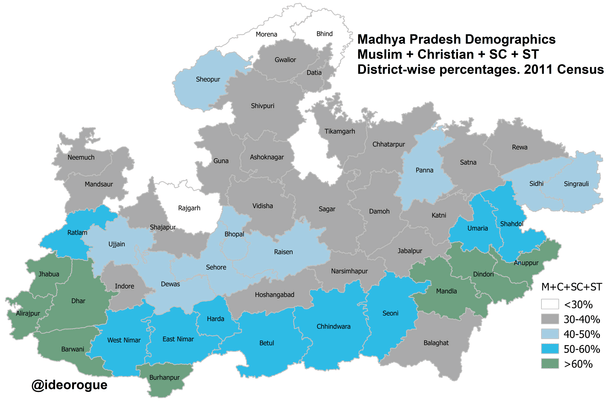
Making life harder for the BJP is another factor — the ‘others’ vote.
As the first table shows, a full fifth of the popular vote is still locked up by the Bahujan Samaj Party (BSP), a number of independents, and sundry others.
Discounting the BSP, the map below shows that most of these dozens of seats are largely located in tribal areas, with another chunk in the north, where scheduled castes are in greater numbers.
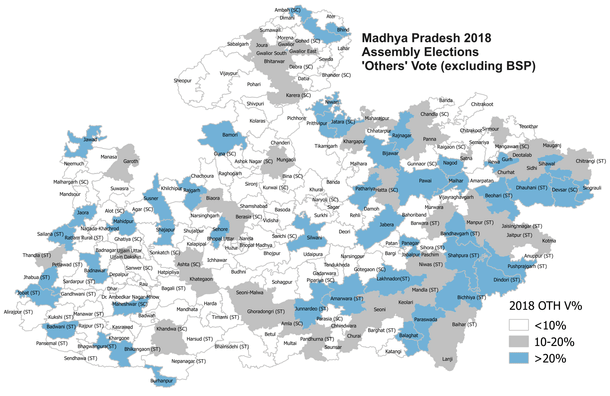
Fortunately, the BJP knows what it is up against, and has been running a fierce, silent, grassroots campaign in many of these regions from the start of the year.
That, plus the Congress rebels, Chief Minister Shivraj Singh Chouhan’s undiminished appeal, a slew of welfare and development schemes, a good monsoon, and Prime Minister Narendra Modi’s campaign, is what the party is banking on.
In addition, it is probable that a sizeable portion of the BSP vote will shift to the BJP, like it did in Uttar Pradesh.
Therefore, in conclusion, the chances are high that the BJP will once again receive the popular mandate, and make it past the halfway mark with an enhanced vote share.
Venu Gopal Narayanan is an independent upstream petroleum consultant who focuses on energy, geopolitics, current affairs and electoral arithmetic. He tweets at @ideorogue.





